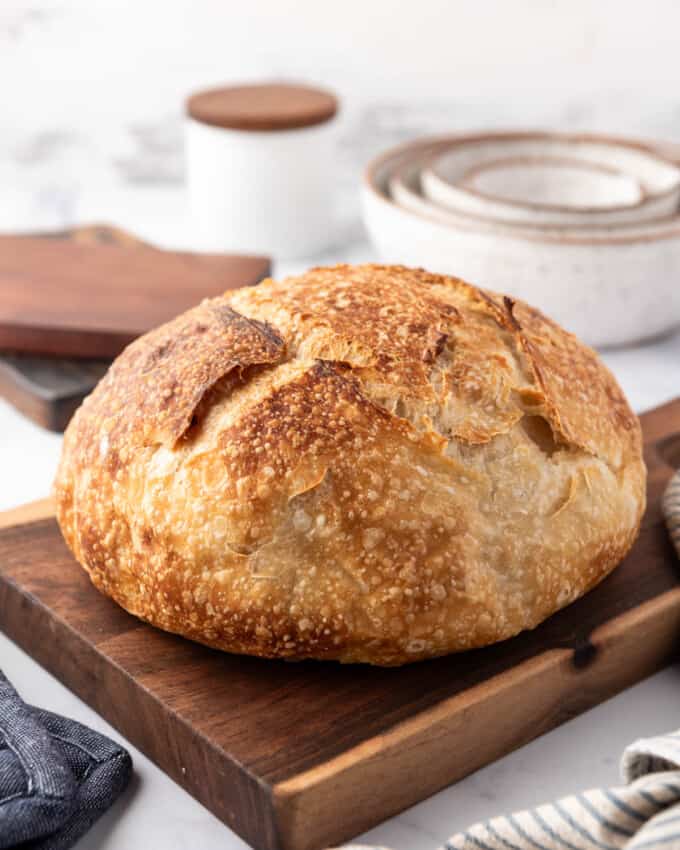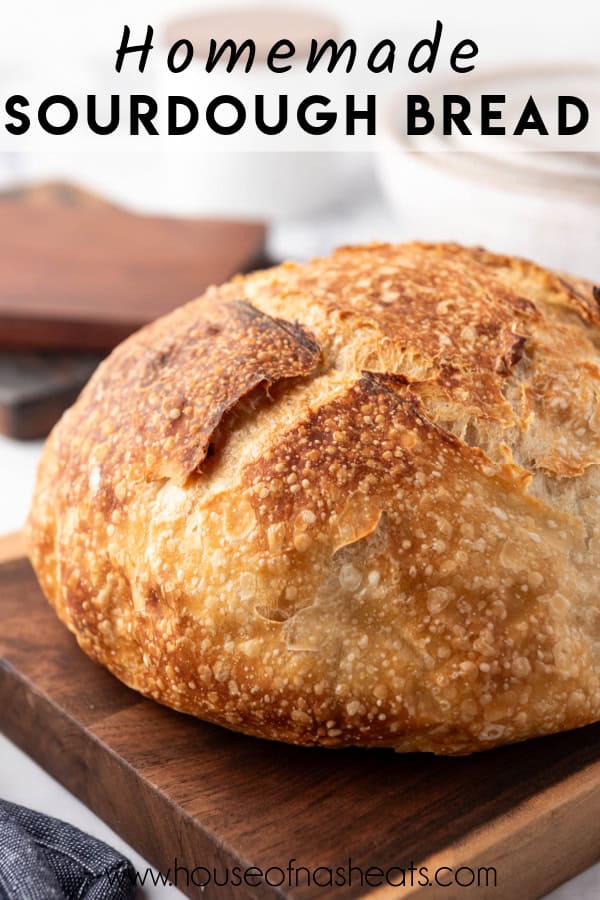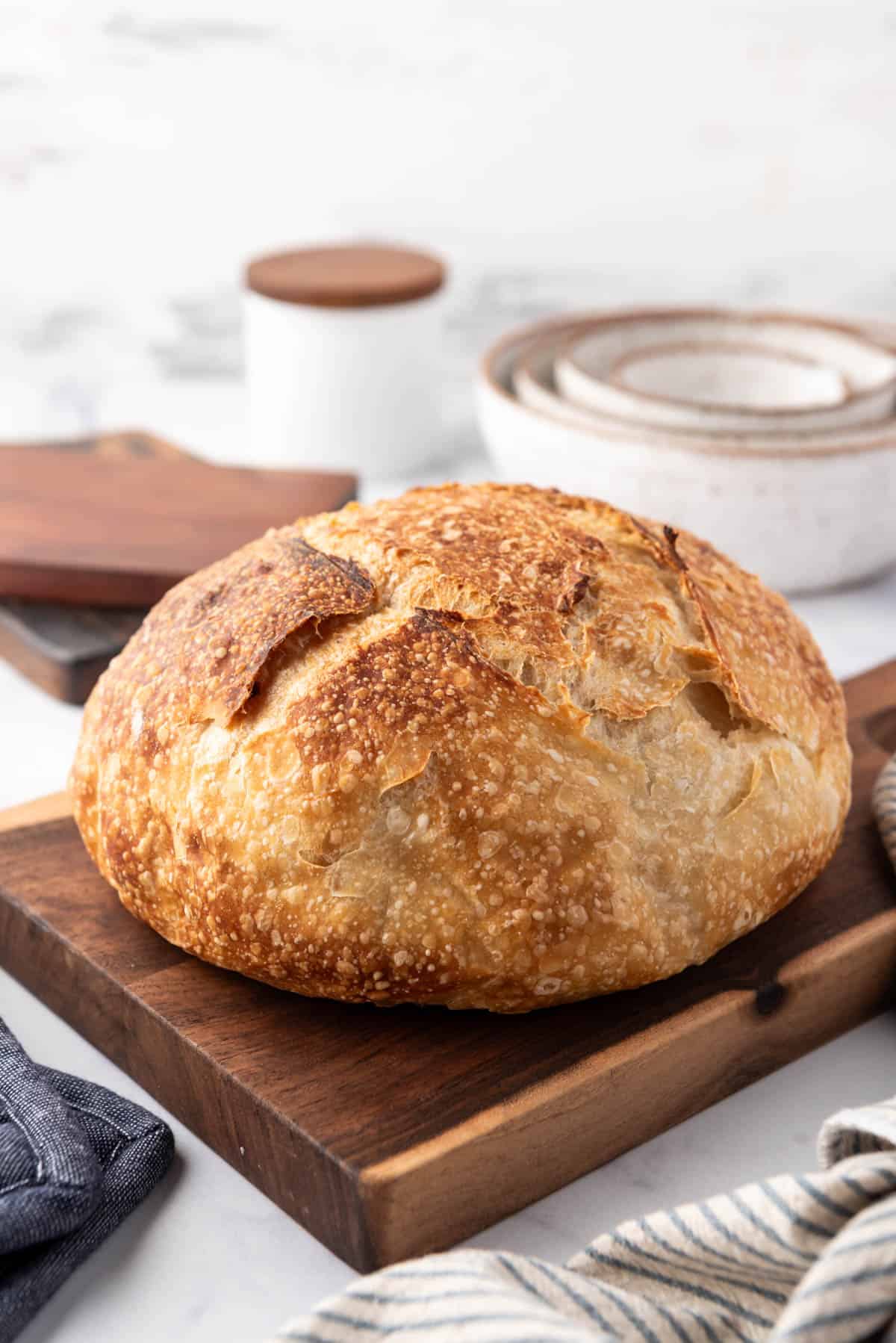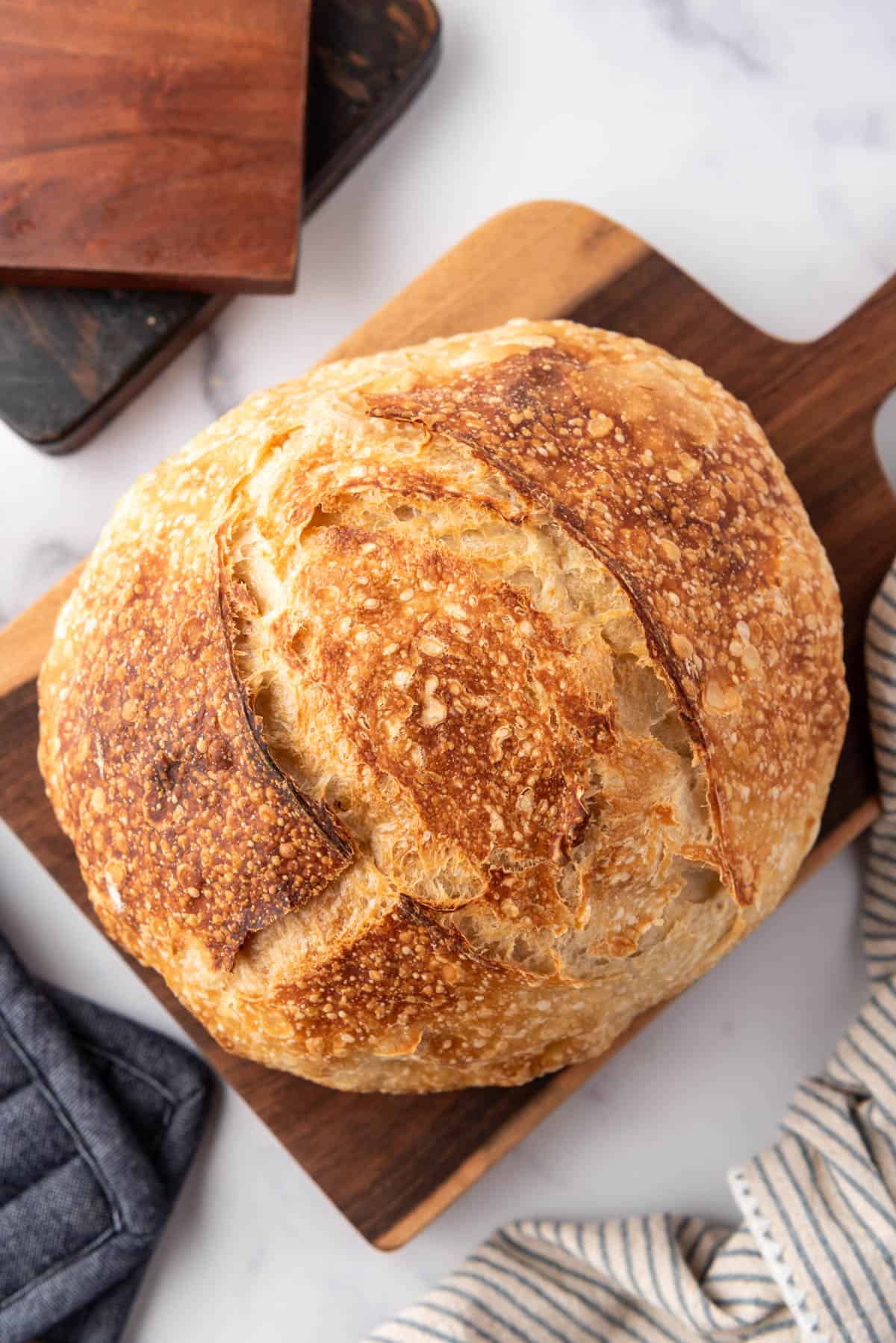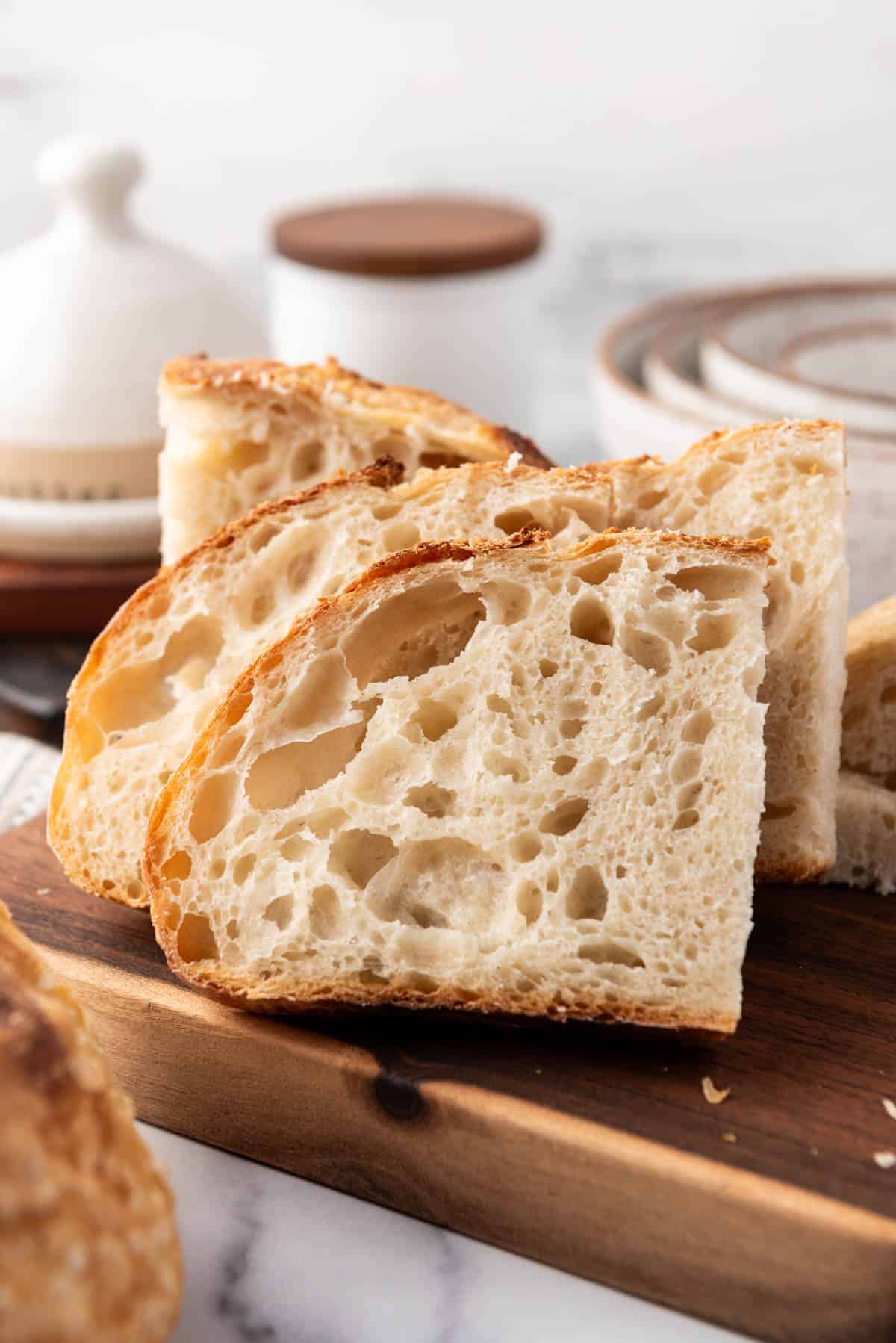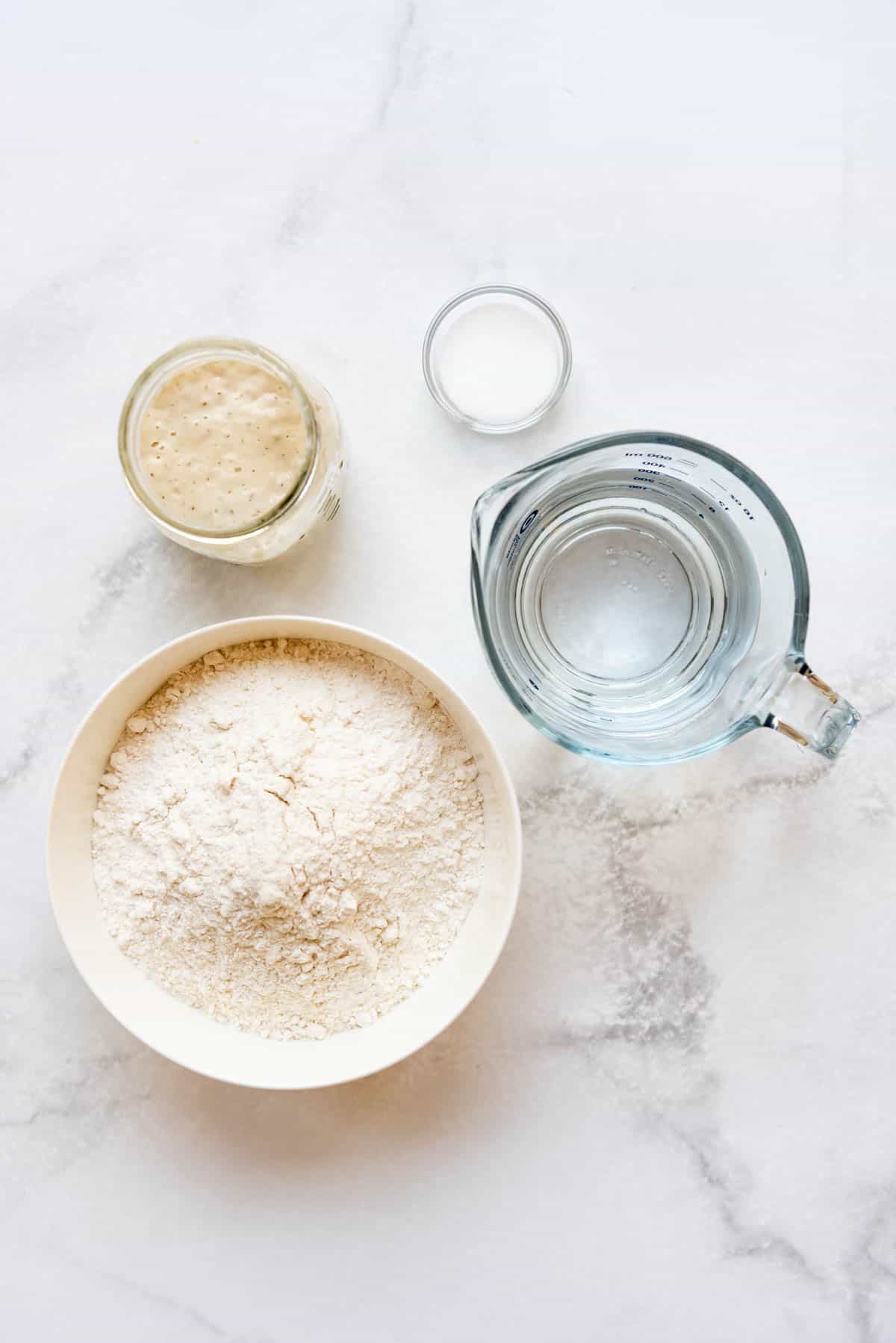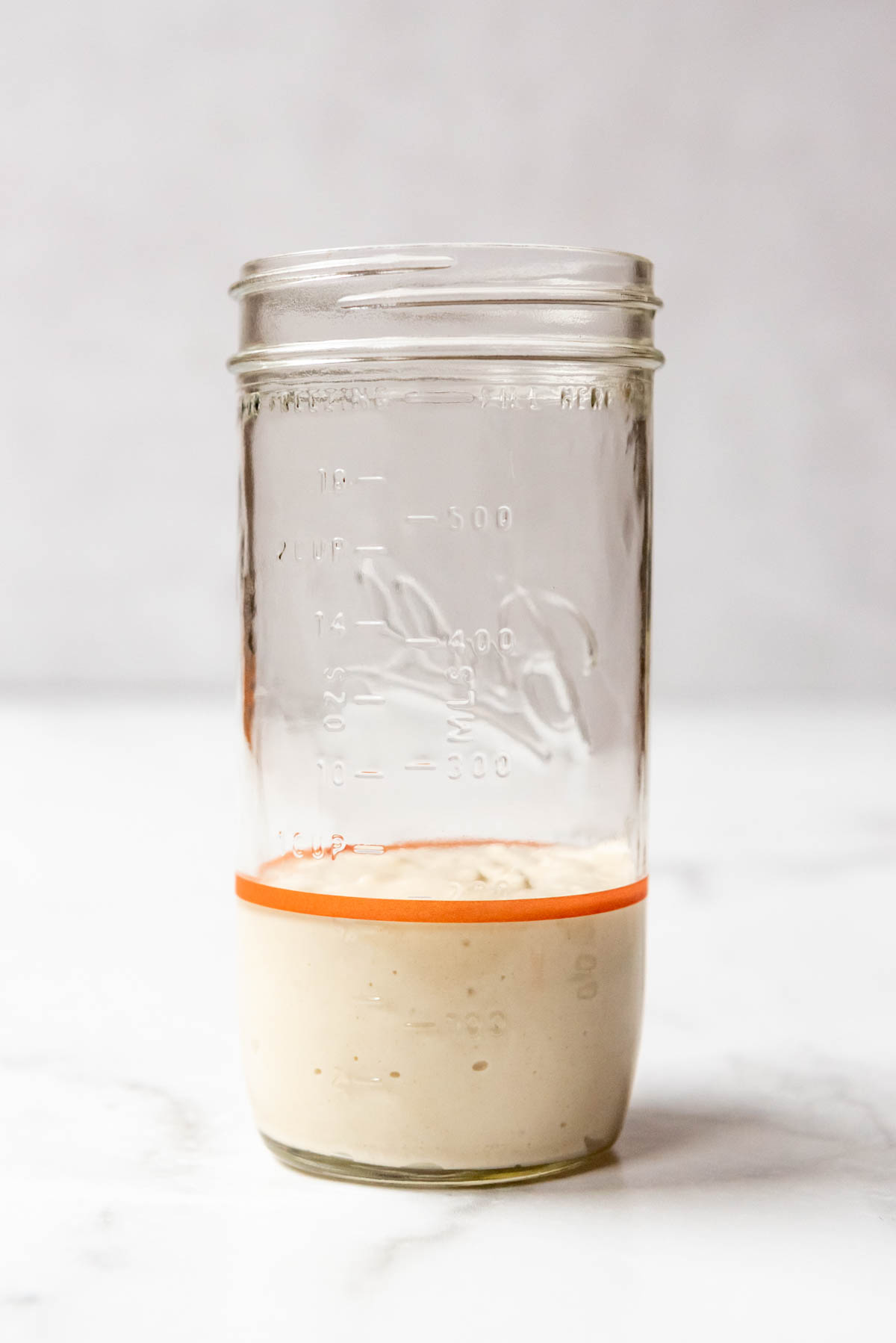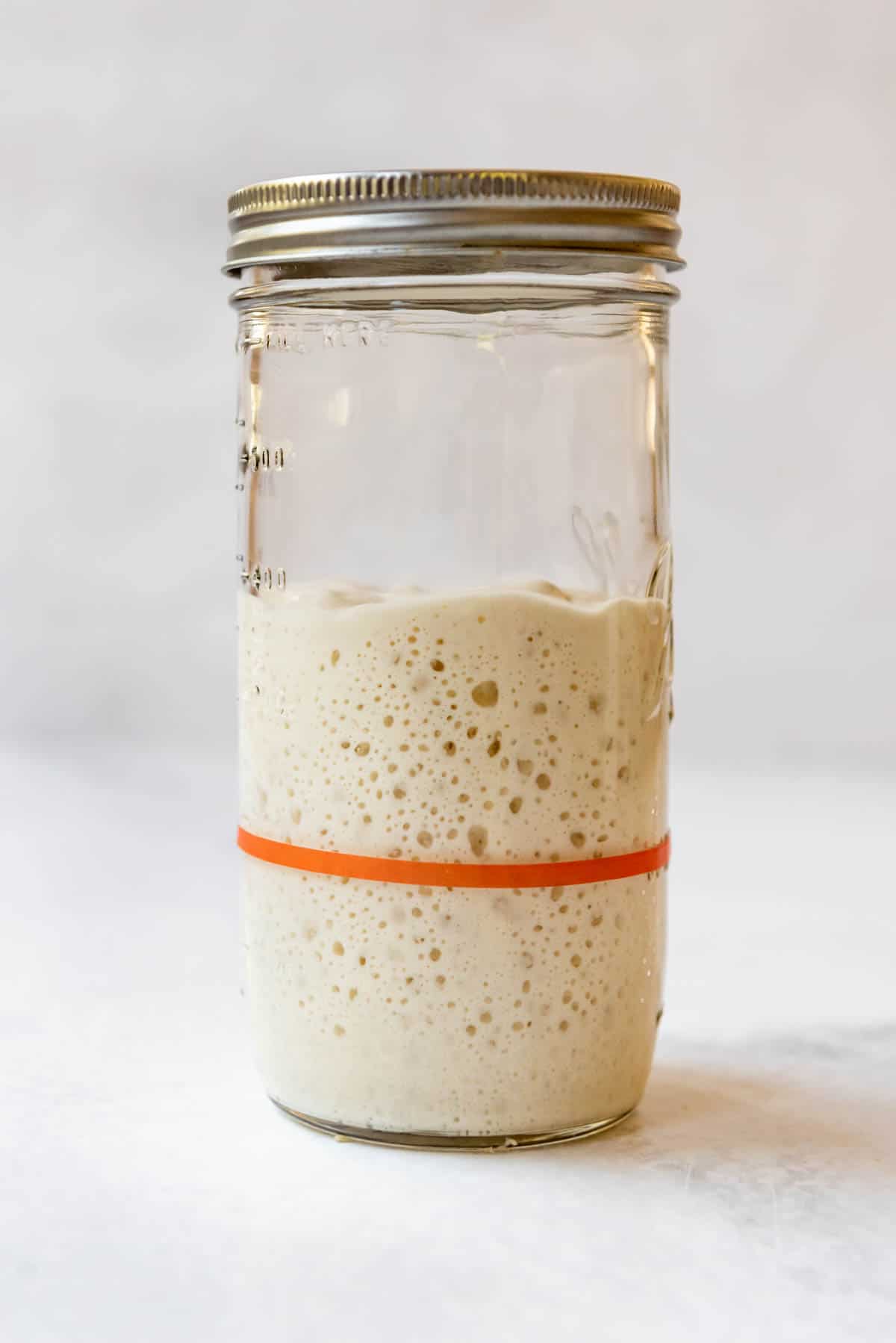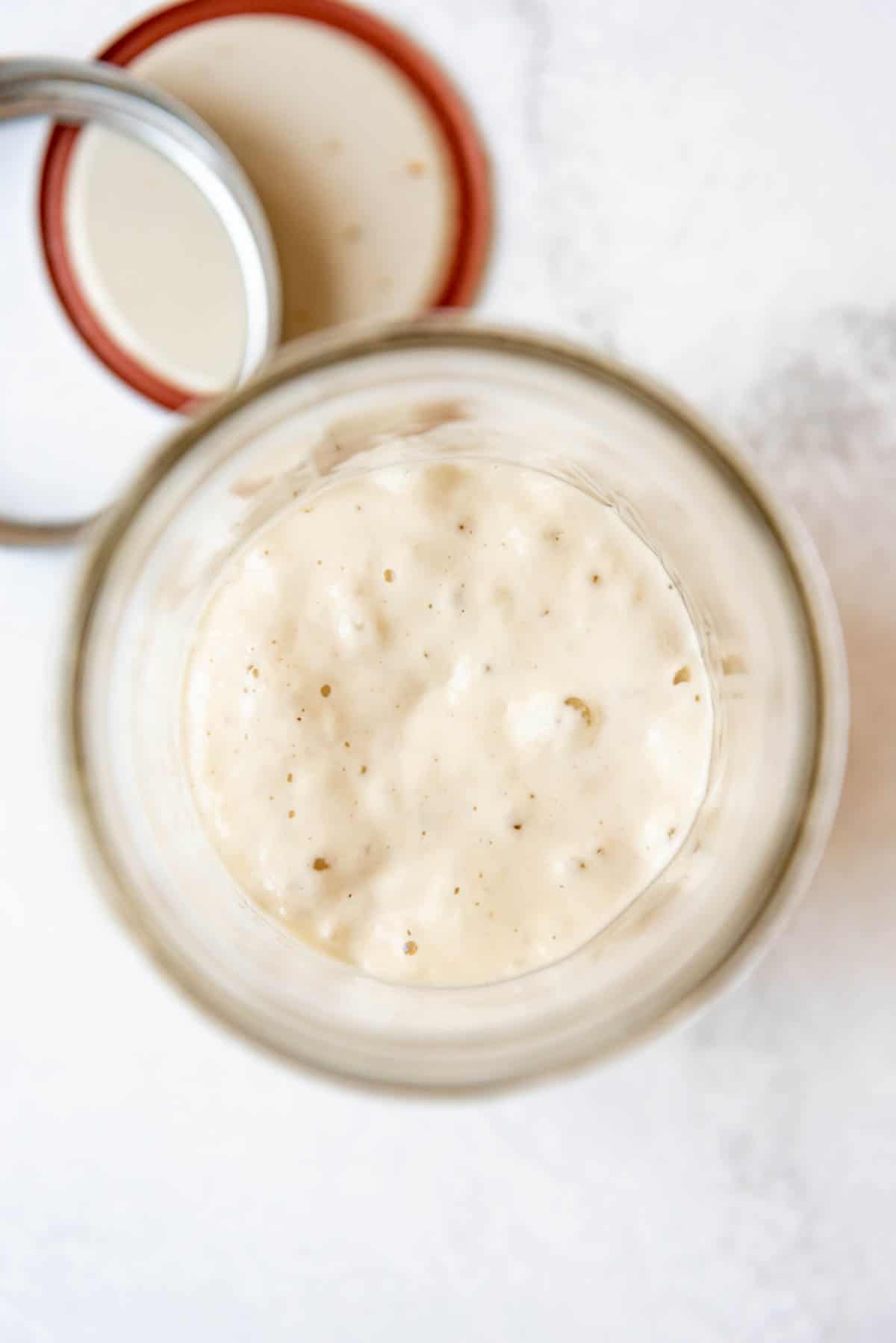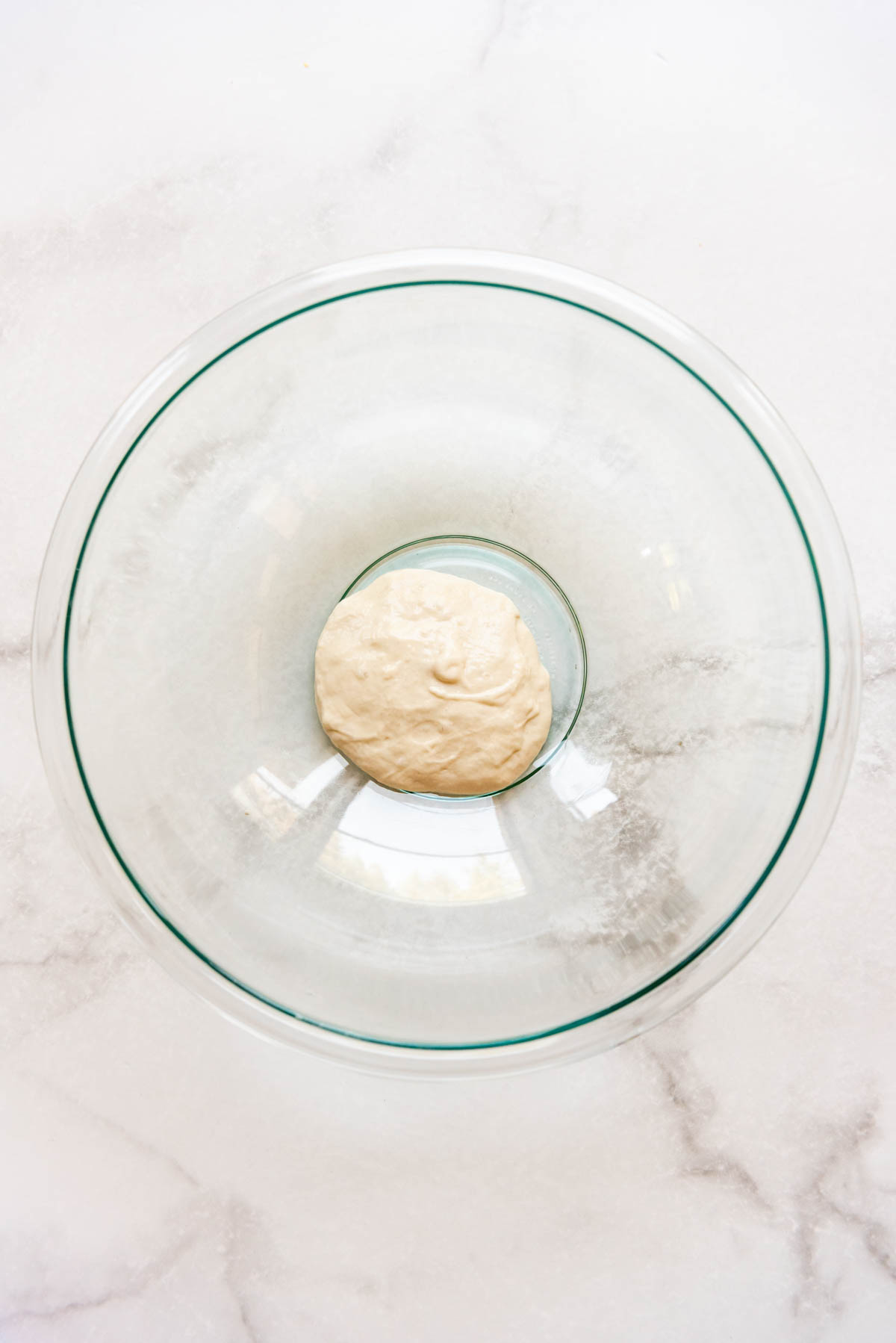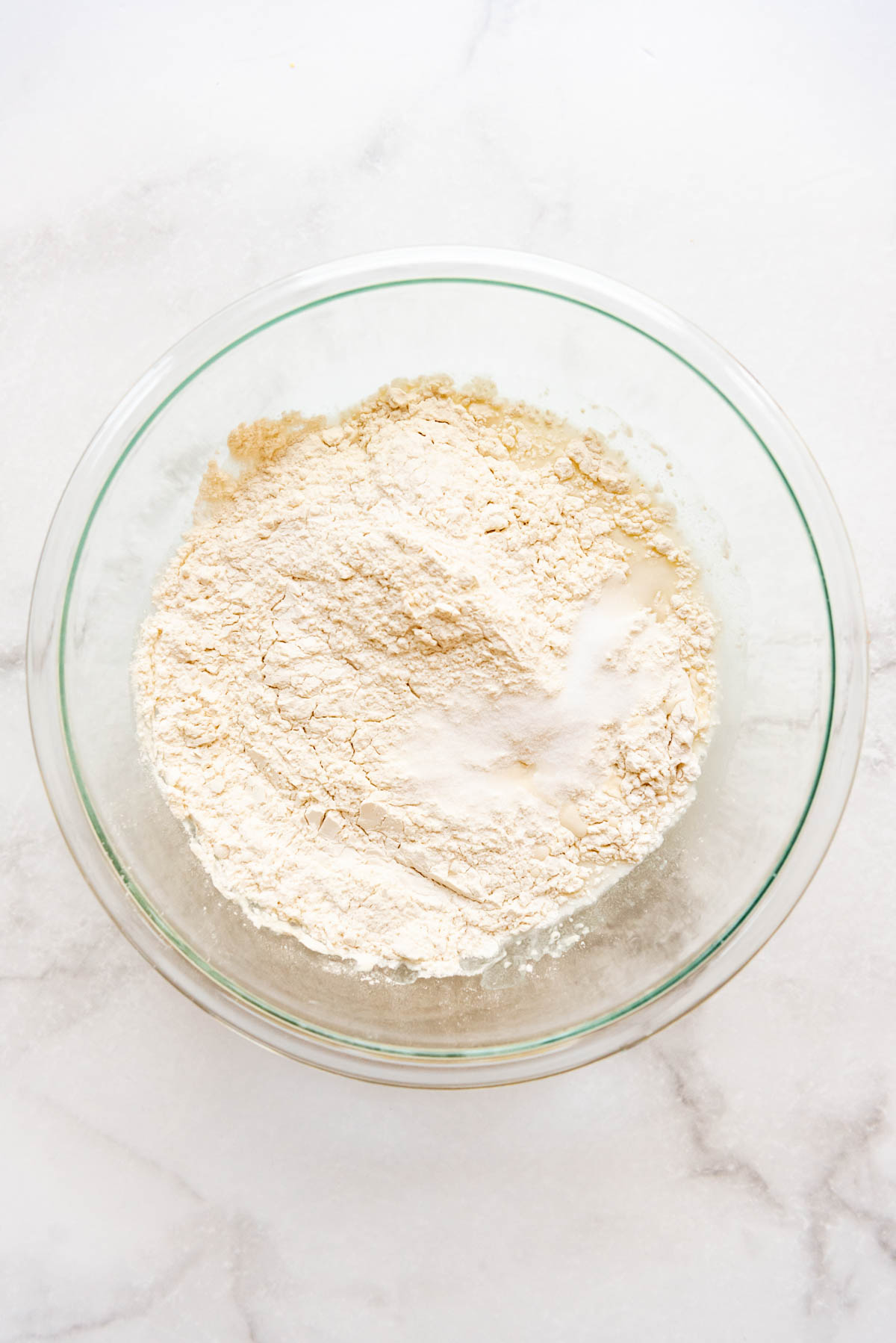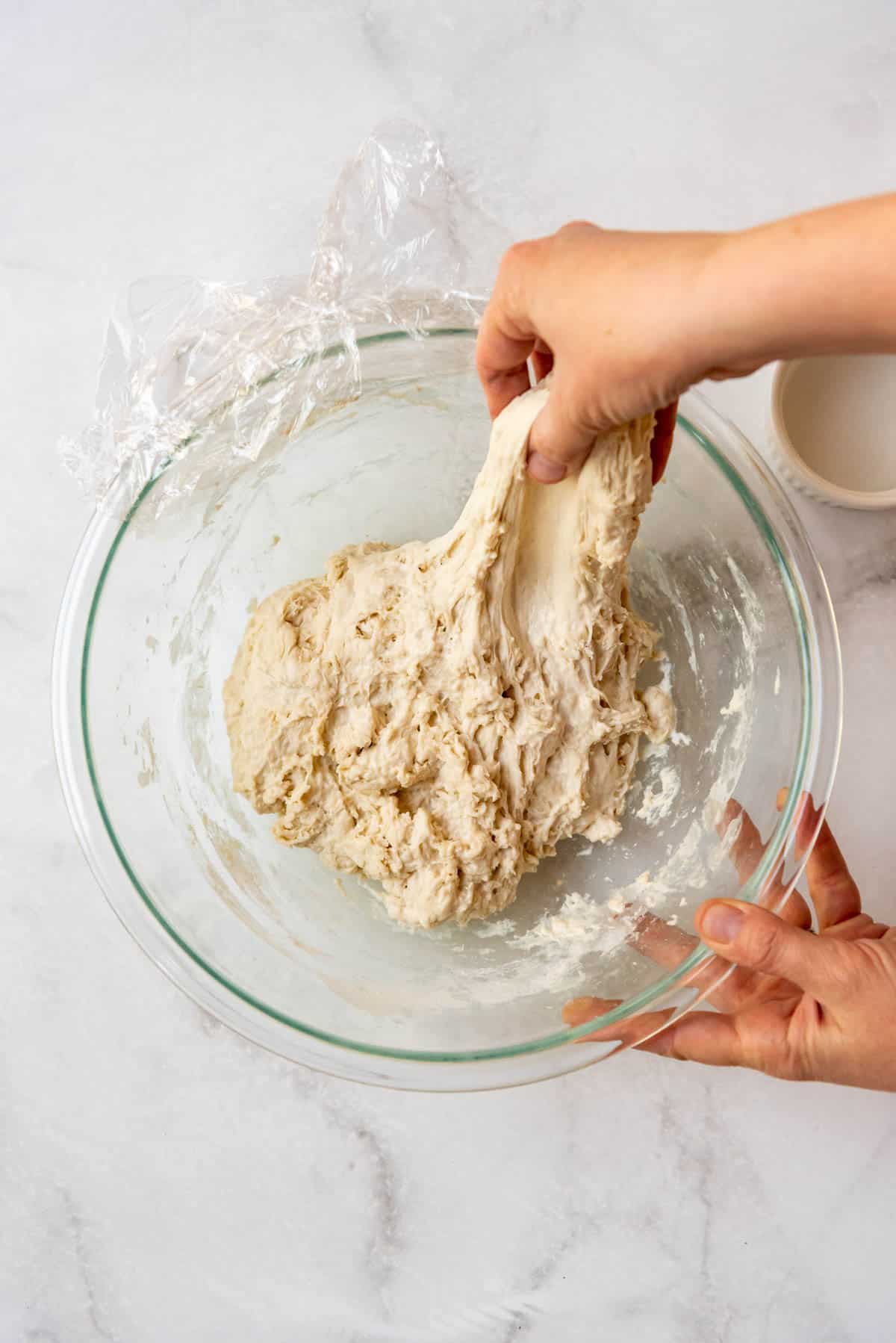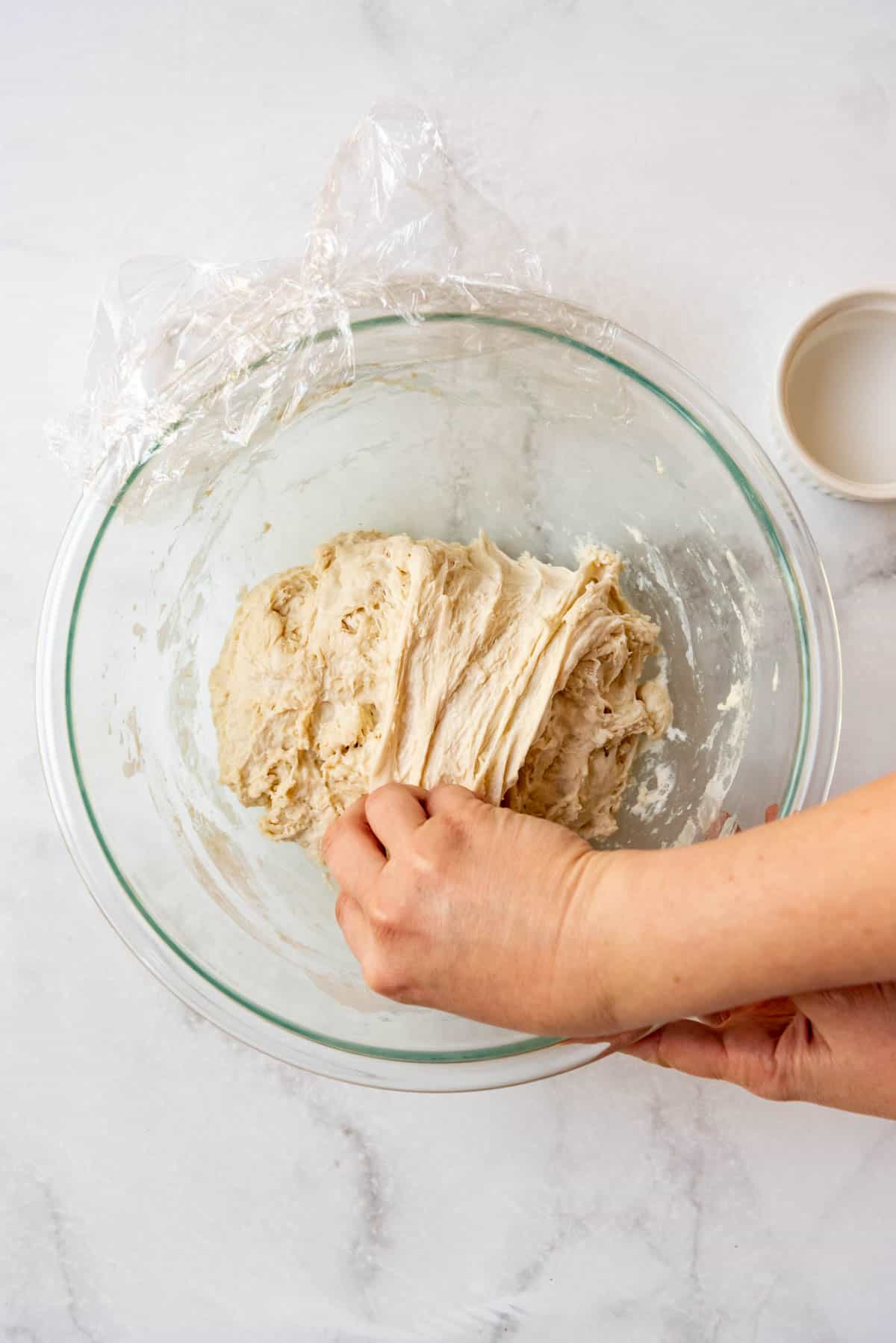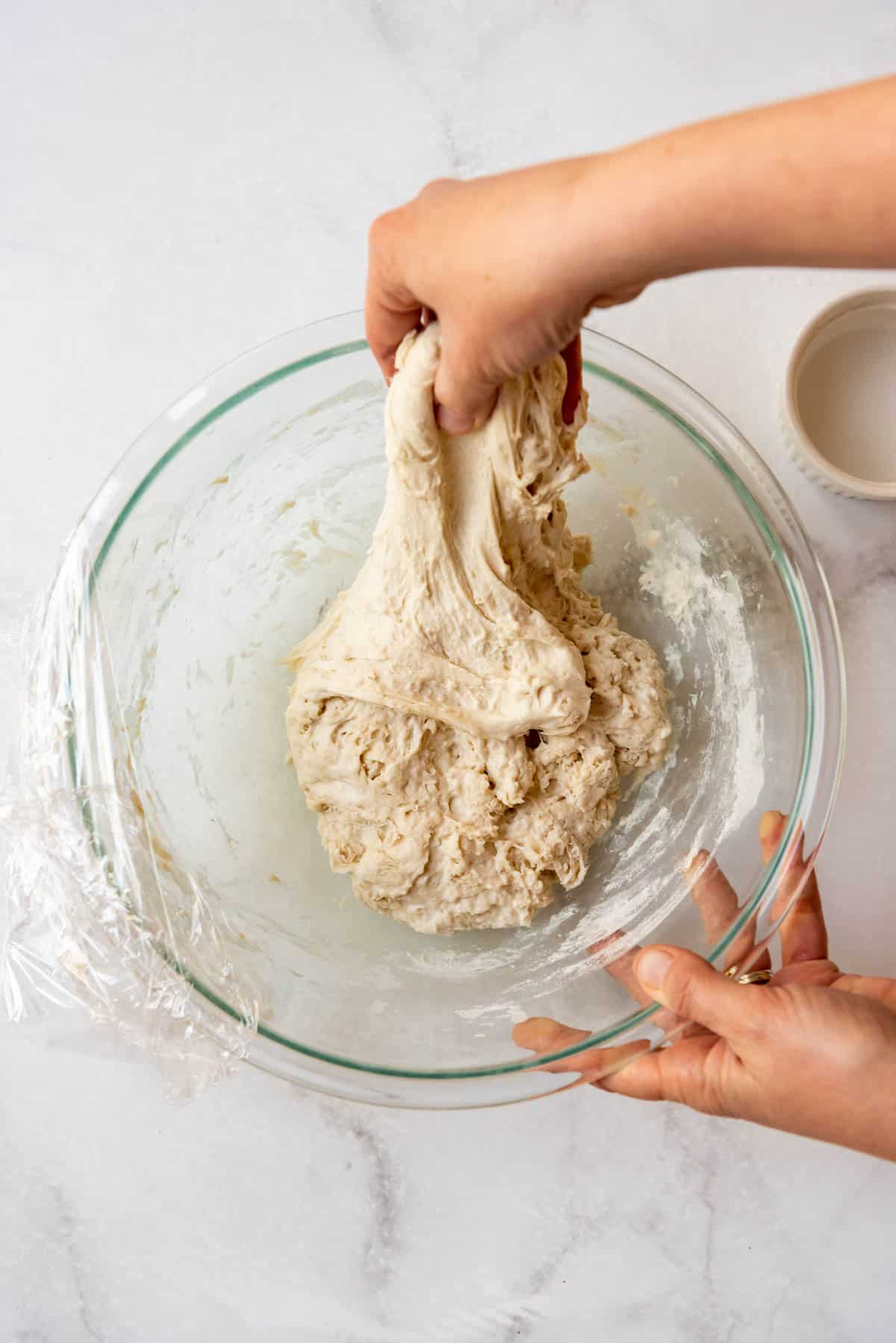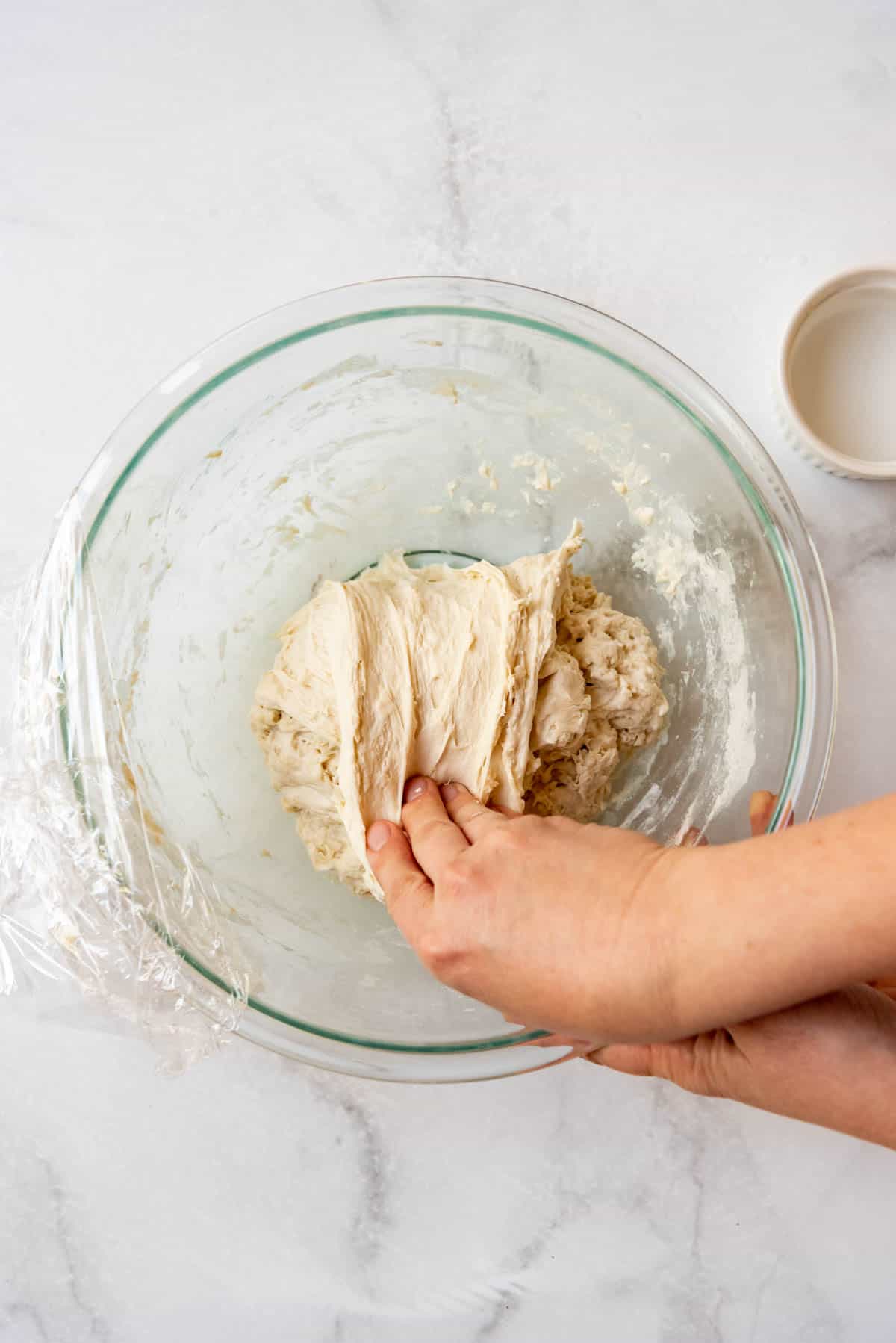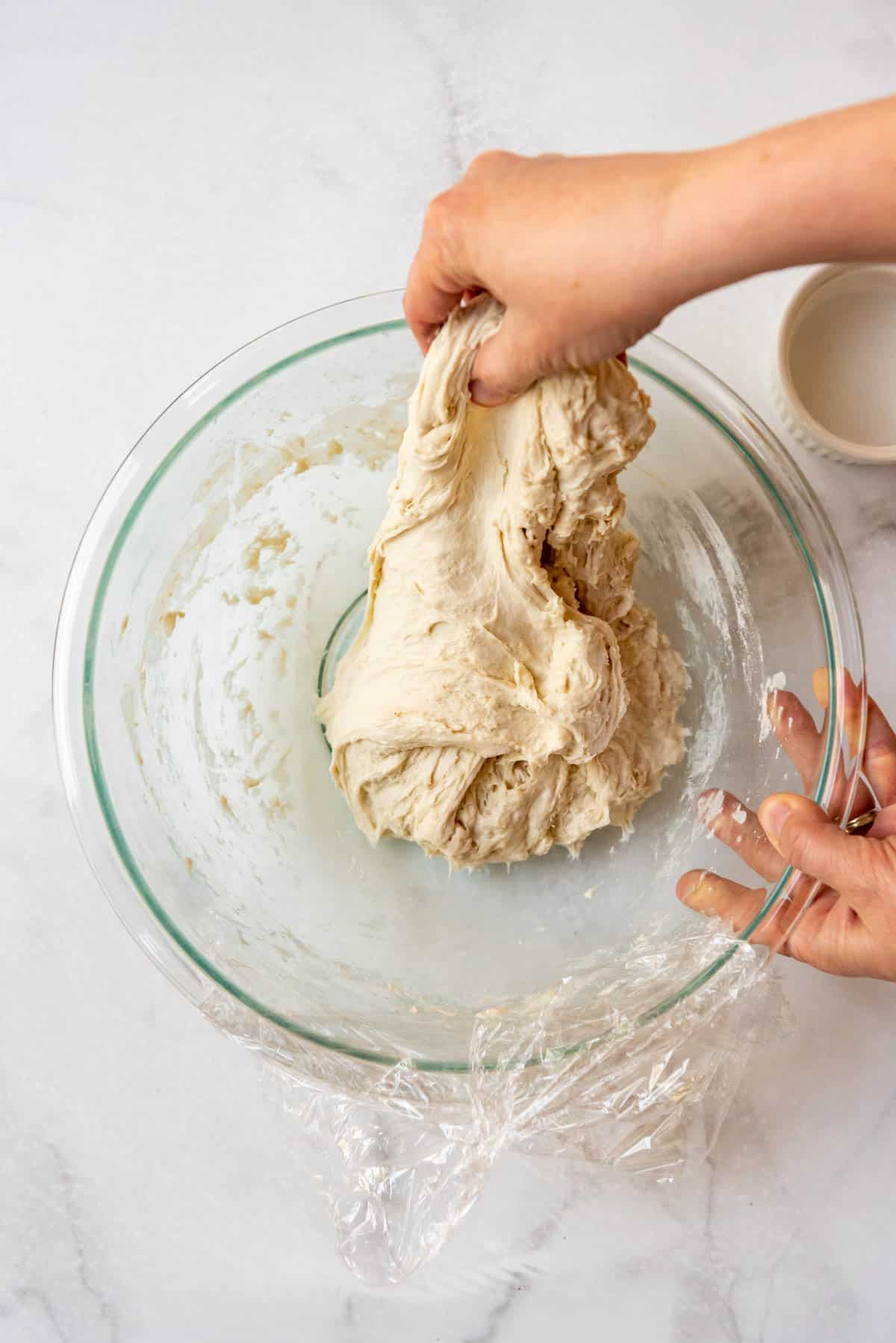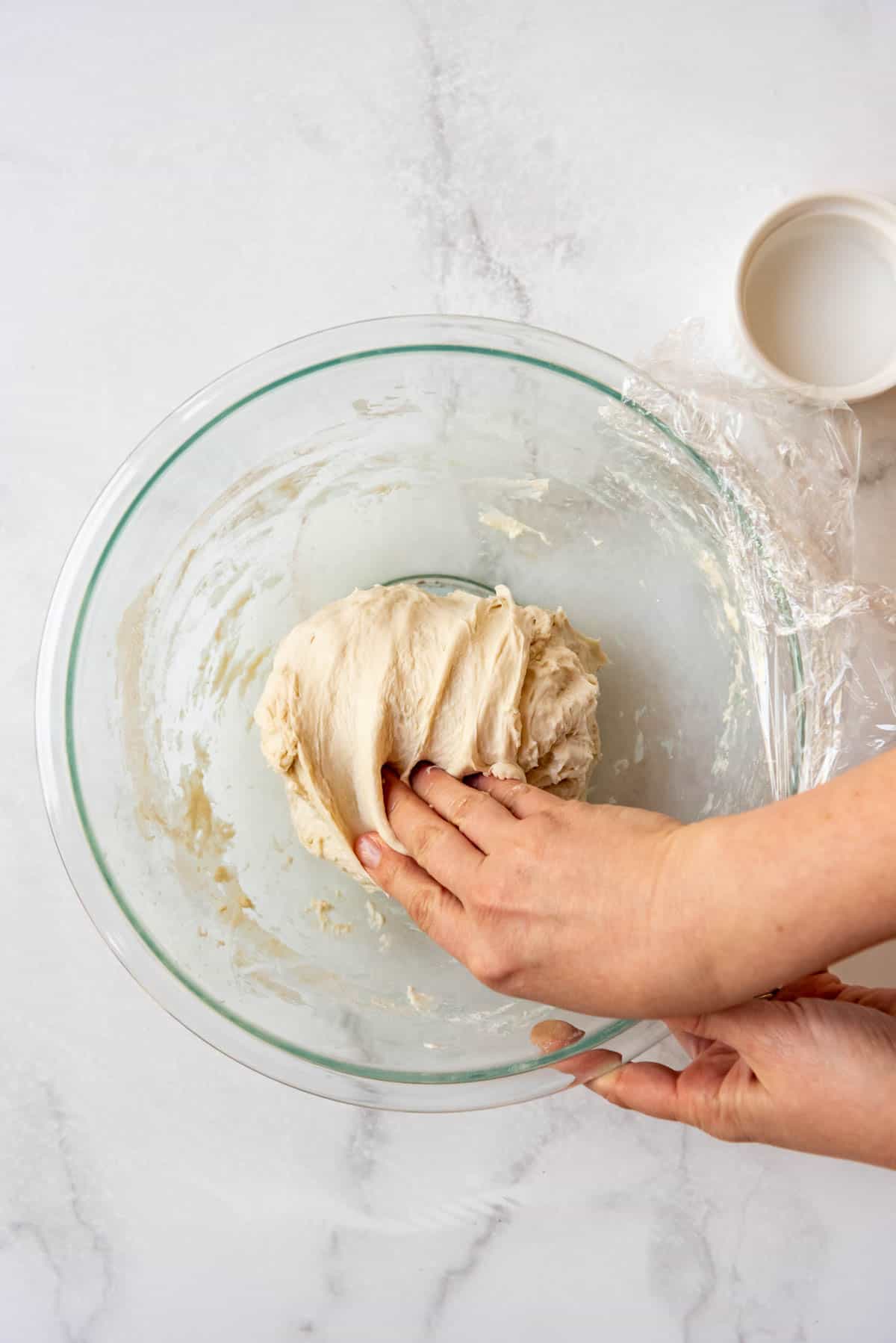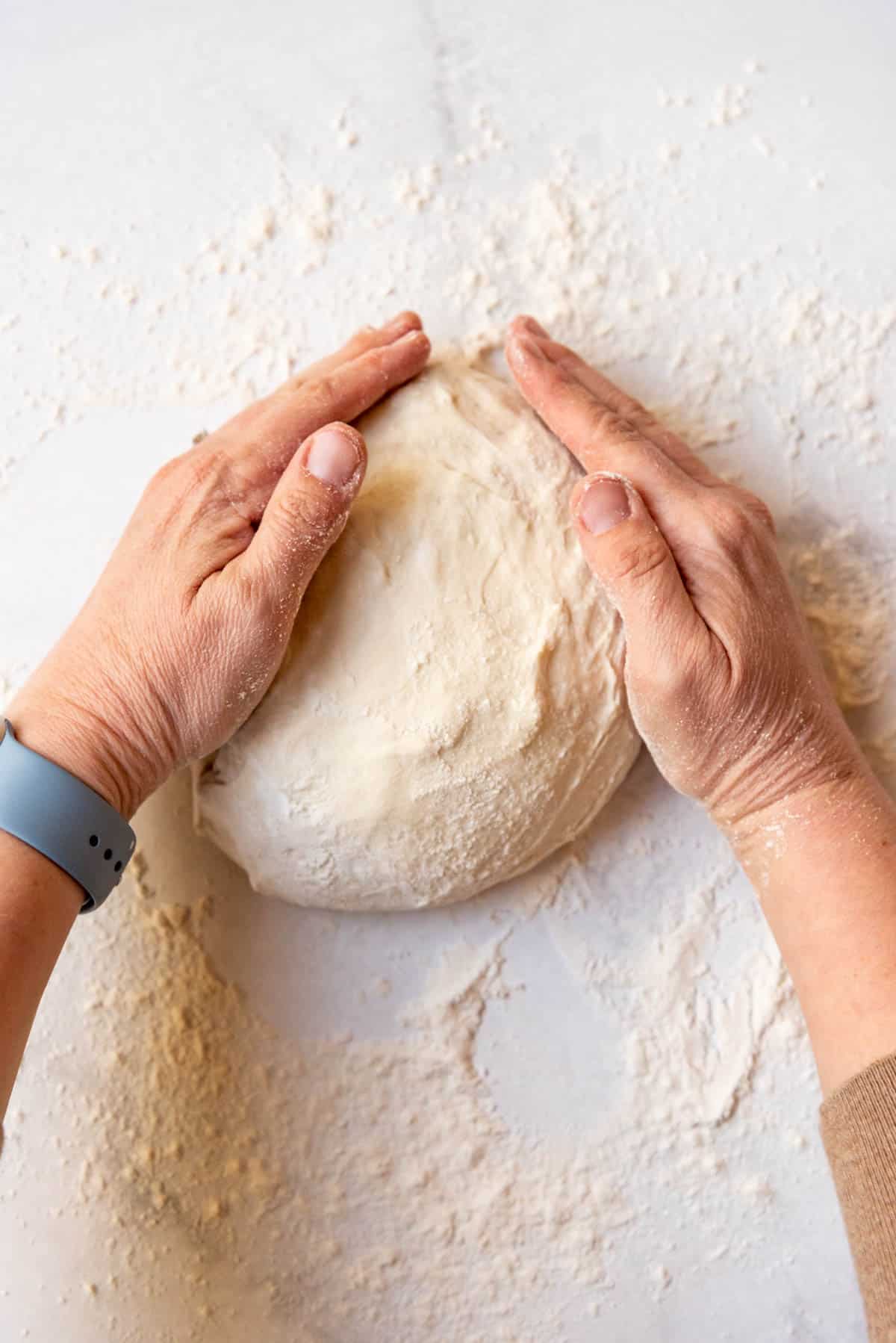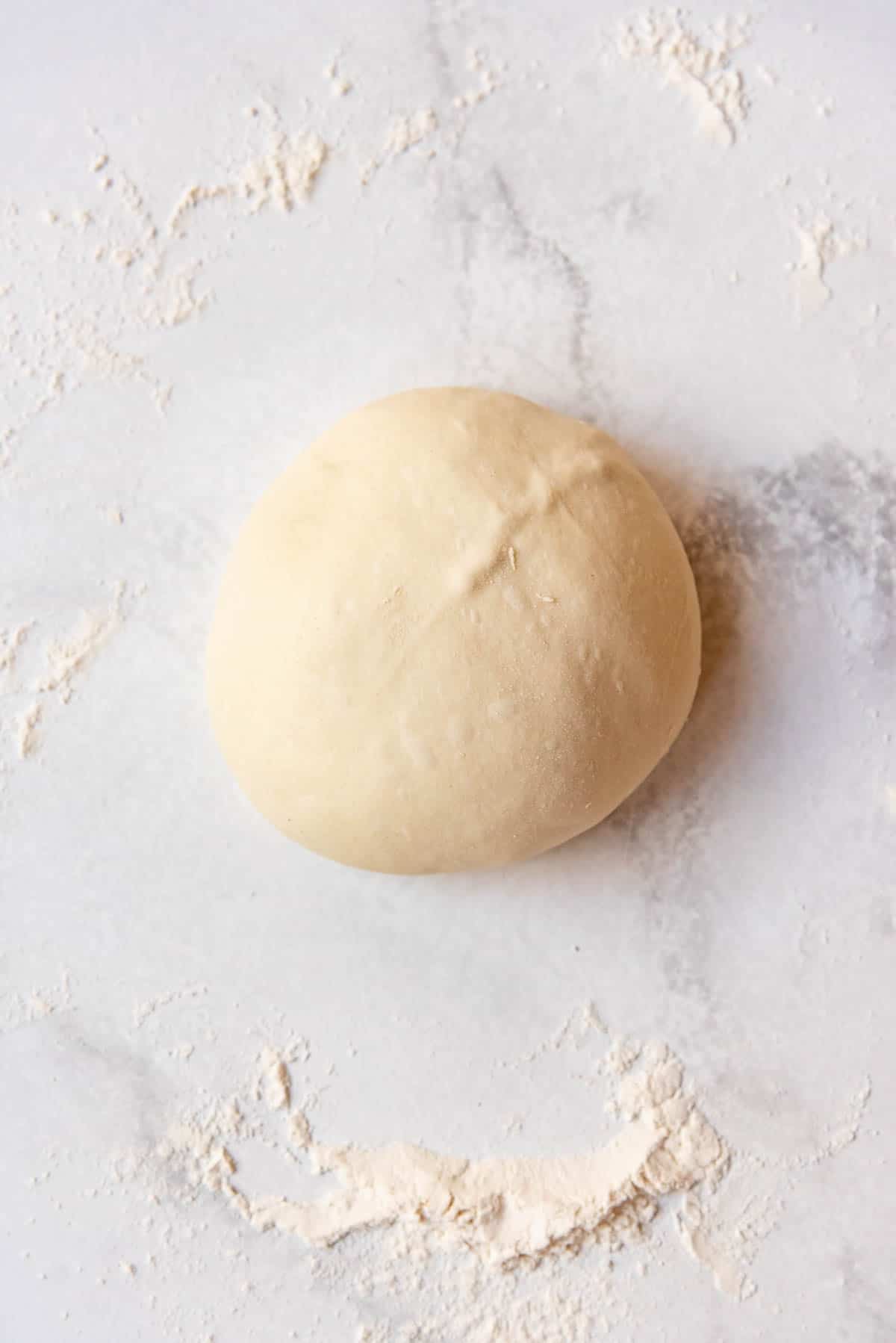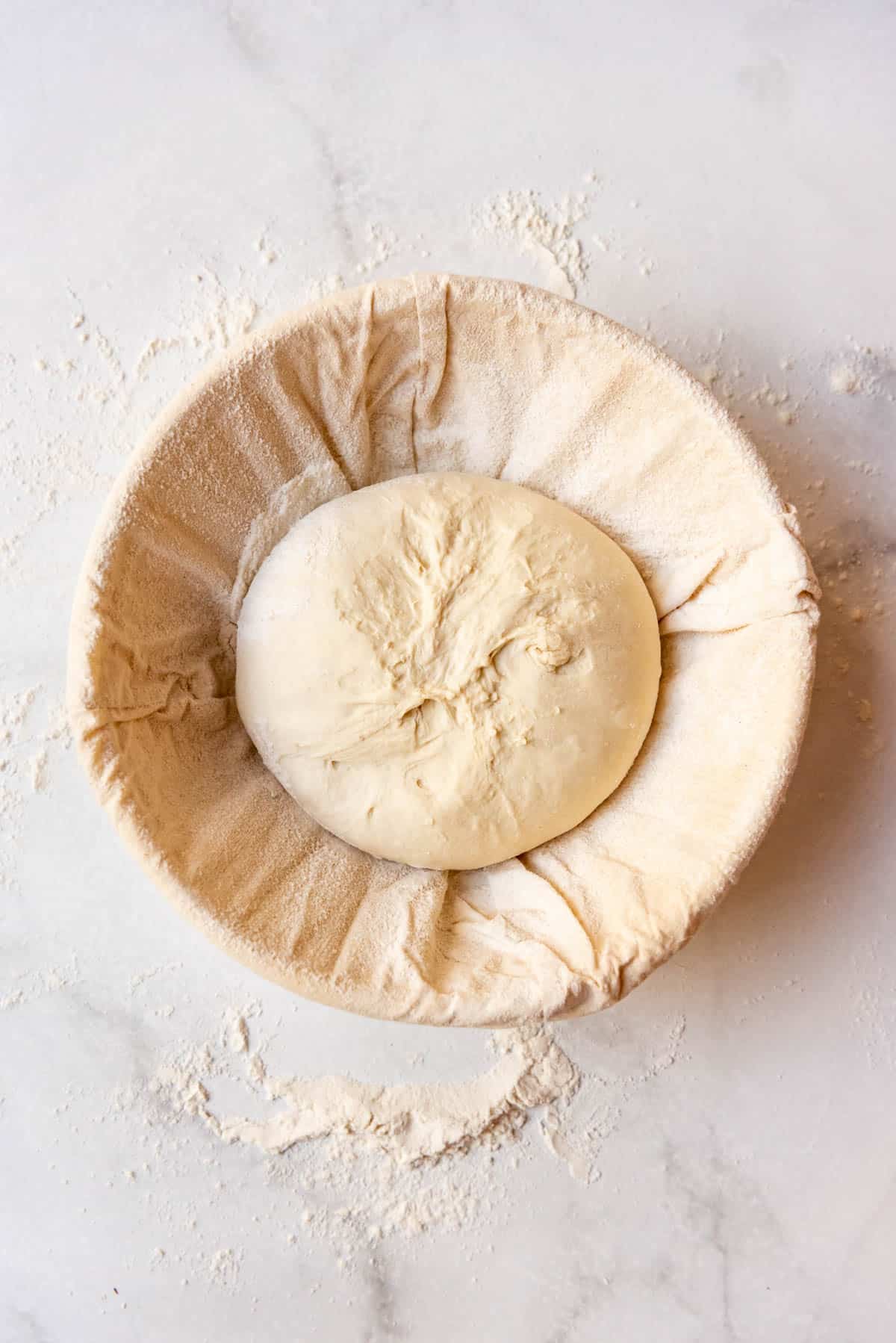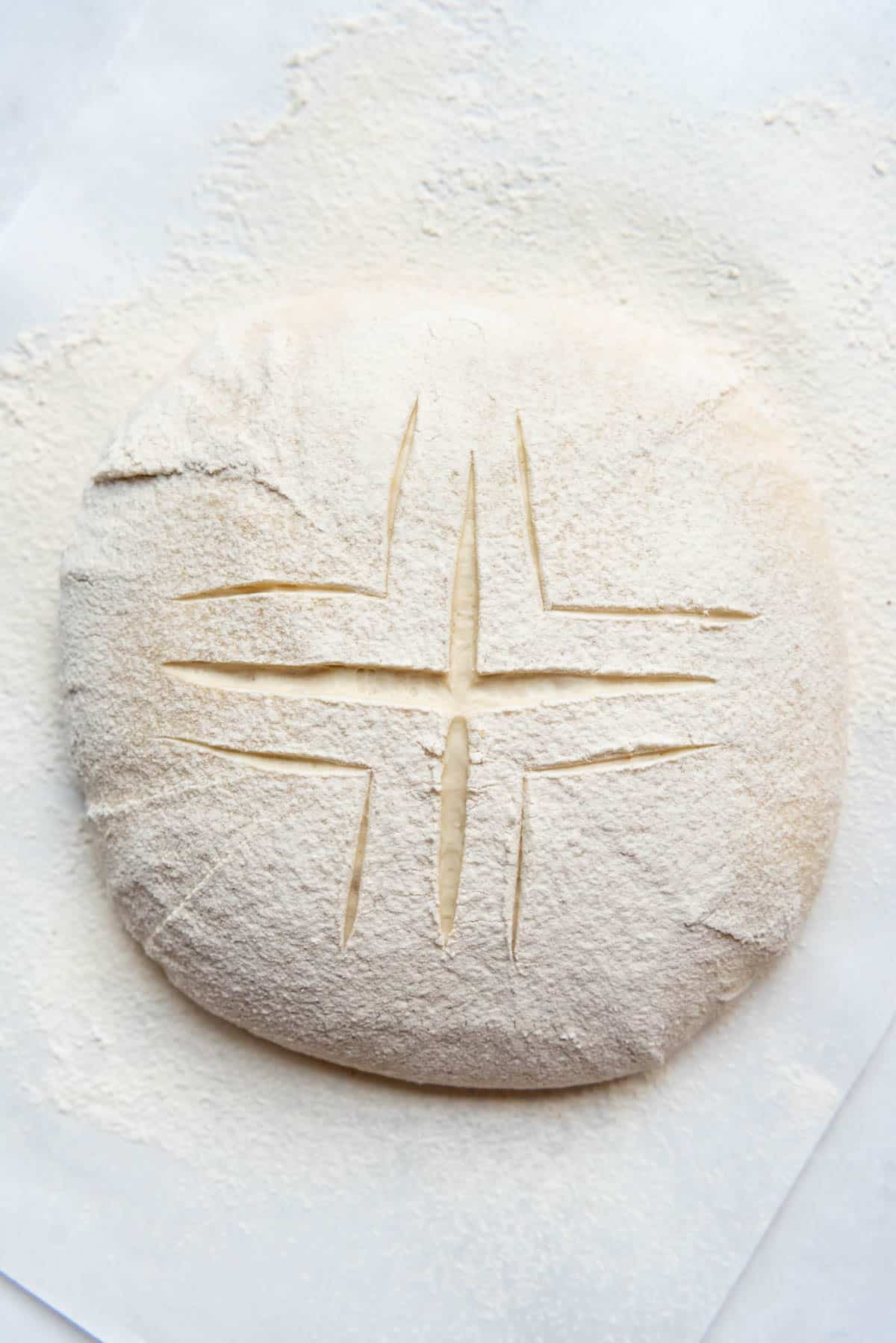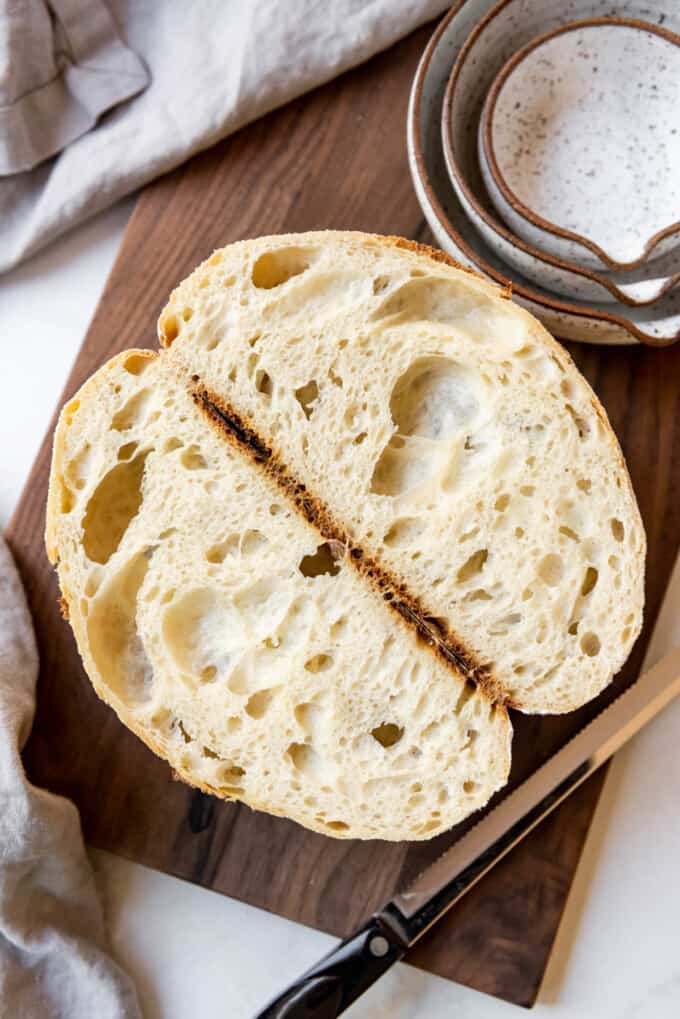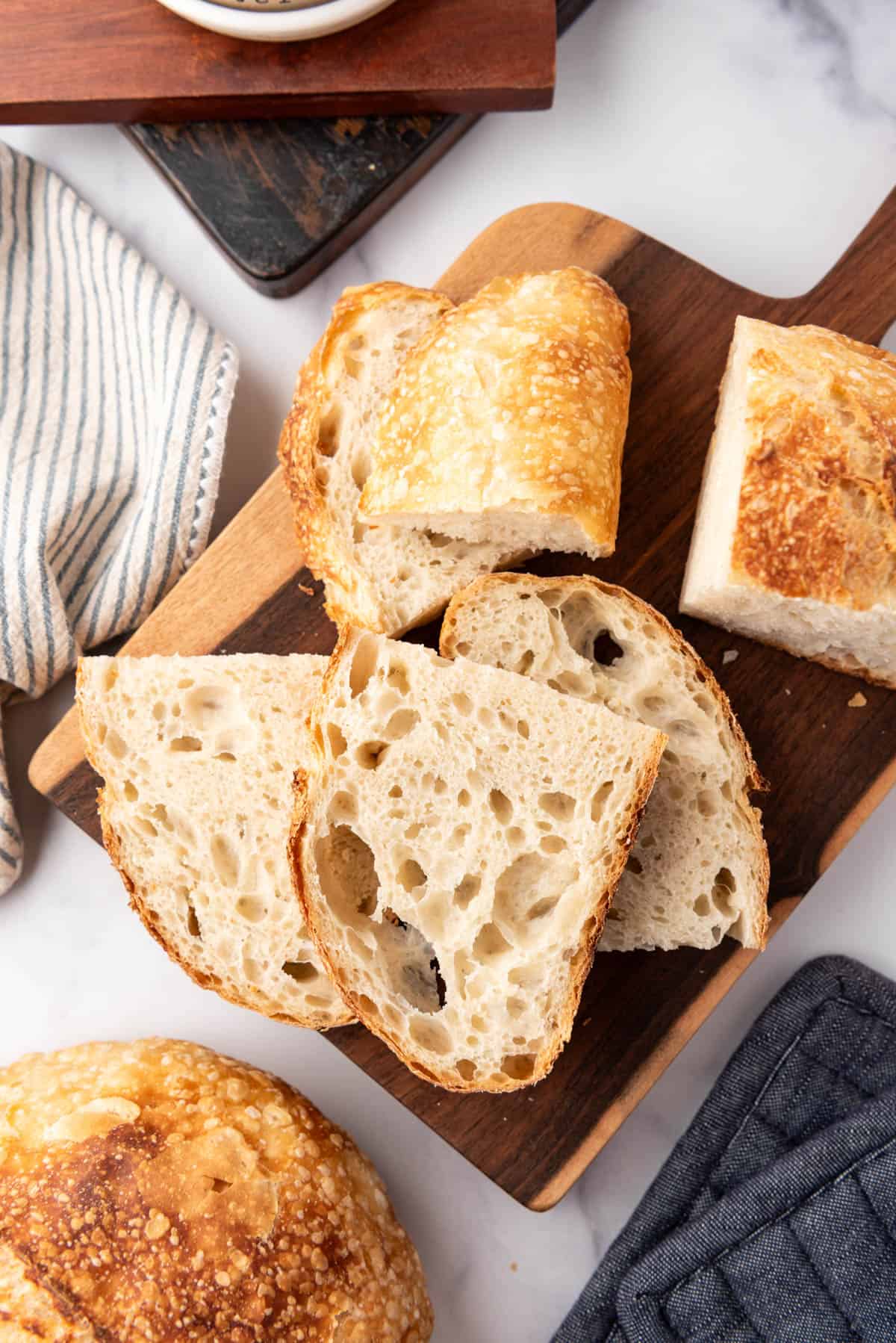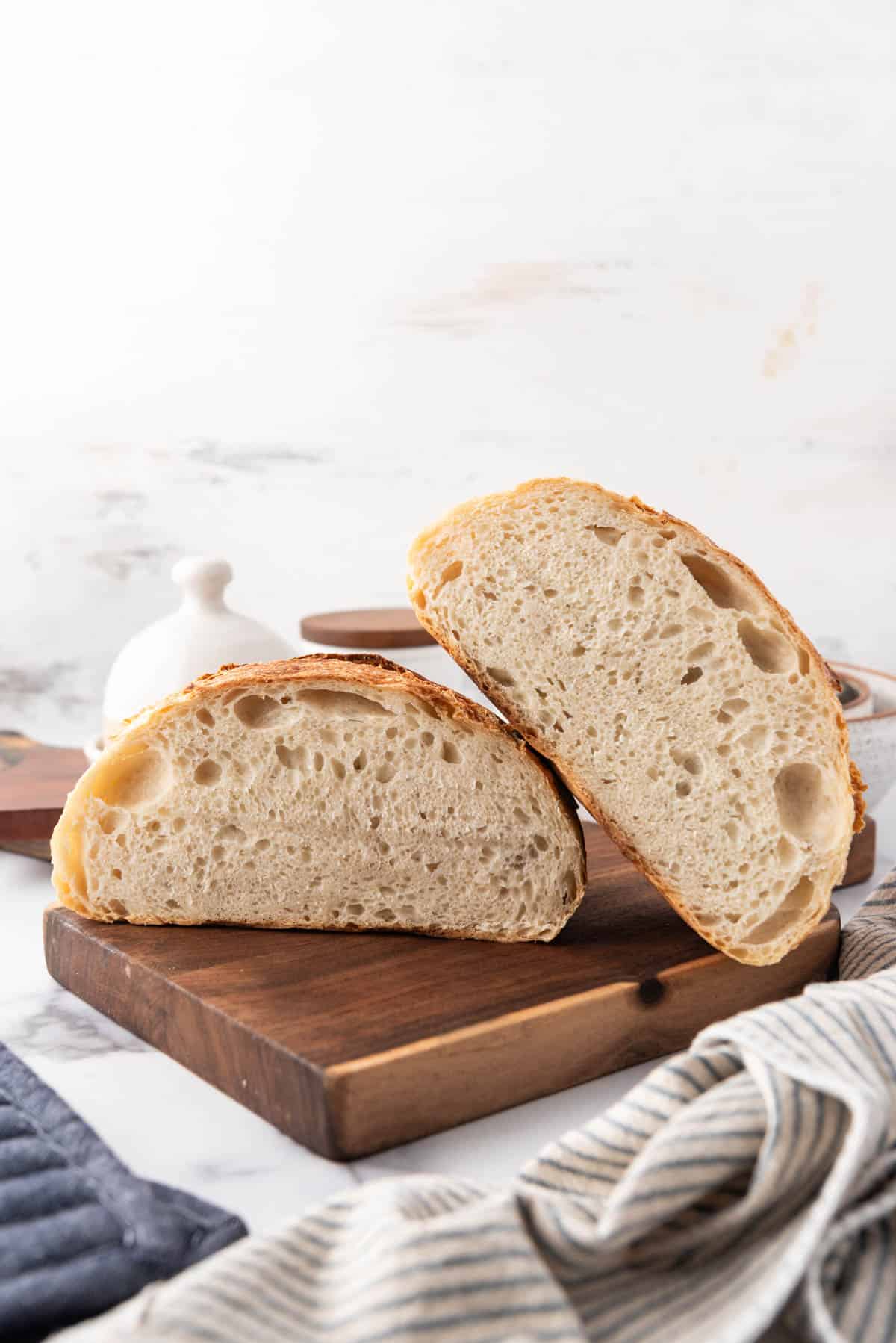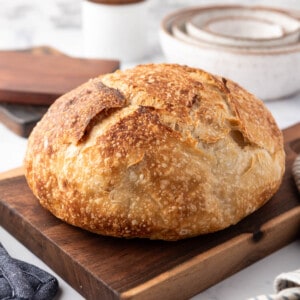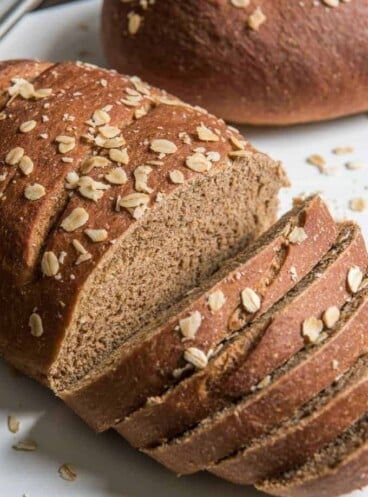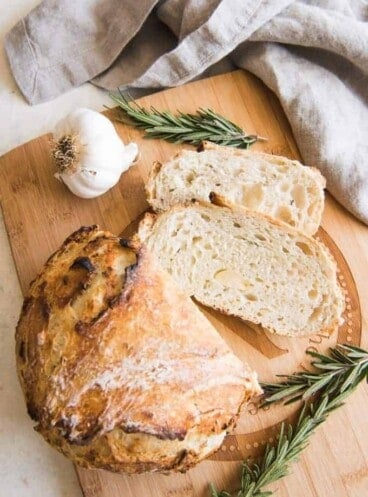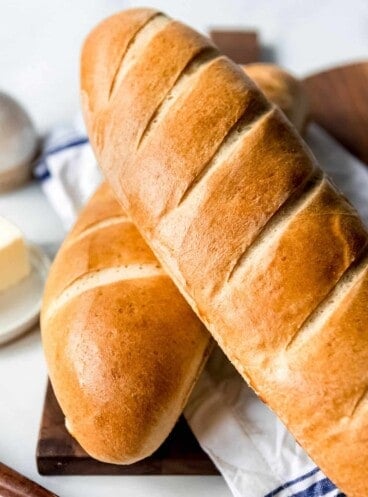Making a loaf of sourdough bread with a chewy crust and signature slightly sour flavor can be intimidating! But this beginners sourdough bread recipe is actually quite easy to make and mostly just takes time. The good news is that the majority of that time is completely hands-off. I’m calling this tutorial “Beginners Sourdough Bread 101” and I’ll do my best to break down the important terms (without going overboard) and set you up for success with your first try. I know that there are all kinds of advanced sourdough recipes out there and you can even go to workshops and retreats to learn the art of sourdough bread making, but I wanted something for everyday bakers to be able to use. My philosophy behind sourdough bread is that it shouldn’t have to be so mysterious and hard. If you are anything like me and tried dipping a toe into the waters of sourdough bread making only to be scared away be terms like “autolyze”, “poolish”, “hydration ratios”, “oven spring”, and “boule” then this sourdough bread recipe for you. This is the recipe that I keep coming back to, week-after-week, for one or two loaves of slow-fermented bread to have on hand for toast, grilled cheese sandwiches, or to go with dinner. After making dozens and dozens of loaves, I’m finally ready to share the approach that I think works best for most new sourdough bread bakers.
What You’ll Need
Scroll down to the recipe card below this post for ingredient quantities and full instructions.
Ingredients
Sourdough Starter – You will want to feed your sourdough starter ahead of time so that it is foaming, bubbly, and active when you are ready to start making the bread. We aren’t using active dry yeast or instant yeast for this bread recipe. Water – Cold to room temperature water is just fine. No need to heat it up. Flour – You can use all-purpose flour or bread flour. Both give great results, although I like bread flour because it makes the bread just a bit chewier. I also highly recommend using organic unbleached flour for the best results. Salt – I use regular old table salt when I make this bread.
How to Make Sourdough Bread Overview
Before getting into the details too much, this is the broad level overview of the process. Keep in mind that this is only about 10 minutes of actual work spread out over a 24 hour period.
Sourdough Starter Basics
It usually takes around 7-14 days to make your own sourdough starter from scratch, so go borrow some from a friend if you don’t have it already and want to make sourdough bread this weekend. To make your own sourdough starter, all you need is flour, water, and time! With regular feedings, the starter will eventually collect wild yeast from the environment, which feed off the flour causing the natural yeast and bacteria to grow. With consistent feedings, the sourdough starter will become strong enough to use for baking your homemade sourdough bread!
Feeding Your Sourdough Starter to Make Bread
If you’ve got a starter already to go, then let’s talk about feeding it so you can bake some bread already!
How much starter should I start with?
You only need 20 grams of inactive sourdough starter to get this ball rolling. That’s roughly about 2 Tablespoons and a pretty tiny amount, which makes it even more amazing that the wild natural yeast can raise an entire loaf of bread! Toss any unused starter in the trash or save the discard (i.e., unused starter that is no longer active and bubbly) in a separate jar in the fridge to make Sourdough Waffles or other sourdough discard recipes.
AM feeding: If you feed your starter first thing in the morning around 7 or 8 am, it will be risen and ready to be used around 5 or 6 in the evening. PM feeding: You can feed your starter in the evening around 8 or 9 pm before bed and it will be ready to go in the morning when you wake up around 6 or 7 am!
How much do you feed it?
I feed my starter an equal amount of flour and water. A 1-to-1 ratio of 60 grams of flour to 60 grams of water is perfect for one batch of sourdough bread because you will use almost all of it and have just the right amount of starter left over to refeed and save for future batches. If you wanted to make 2 loaves of bread, just double the flour and water that you feed your starter.
Wait for the sourdough starter to get bubbly
I like to put a piece of washi tape or a hair elastic around the mason jar that I use for my starter right at the top of the line of where the starter was when I fed it. It helps to easily see how much the starter has risen and judge whether it is ready to use.
Equipment
Large bowl A fork or wooden spoon for mixing Kitchen scale or measuring cups Plastic wrap or dish cloth Parchment paper Dutch oven or baking sheet Sharp serrated knife or razor blade
Step-by-Step Instructions
Additional Items That Are Helpful But Not Necessary
Banneton bread proofing basket – These super light wooden bowls are made for proofing your bread dough. You can use it with or without the cloth insert, depending on whether you would like the ridge design in the top of your loaf. Lame tool – This handy little tool is just a straight edge razor blade for scoring the top of your loaves and will replace the serrated knife or razor blade from the list above.
Tips for Success
Don’t skip the cold ferment. Letting the dough rest longer really helps develop the sourdough flavor. Try using some rye flour or buckwheat flour to help develop more of the acid-producing bacteria that gives some of that sour flavor. If you made your own sourdough starter and it’s still fairly new, the sour taste will be more mild than a more established starter. As you continue feeding and using your starter it will develop a stronger sour quality with time.
How to Store Sourdough Bread
There are lots of different methods for storing sourdough bread, but the ones that work best for me are the simplest options like wrapping it in plastic wrap to keep it fresh. You can also freeze a loaf of sourdough bread and thaw on the counter later. Keep in mind that even slightly stale sourdough bread tastes pretty fantastic when toasted and buttered.
More Bread Recipes
Best Challah Bread Amish White Bread Homemade Potato Bread Recipe Easy Rosemary Focaccia Bread Homemade Garlic Naan Bread
Let me know what you thought with a comment and rating below. You can also take a picture and tag me on Instagram @houseofnasheats or share it on the Pinterest pin so I can see.
Sweet Molasses Brown Bread
Roasted Garlic & Rosemary No-Knead Artisan Bread
Homemade French Bread

